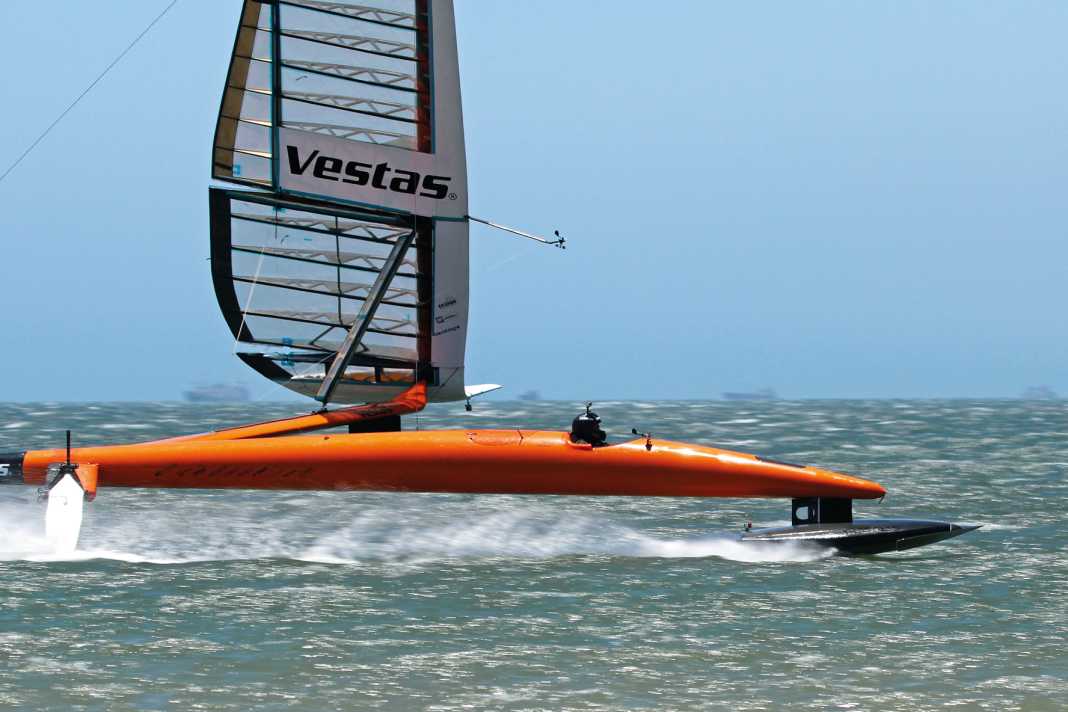





"Sailrocket 1": 65 knots are the benchmark
Australian Paul Larsen and his team needed two boats and around ten years of development work to break the record with their outrigger on three foils. "Sailrocket 1" rolled over in the air during a run at over 50 knots. The team was the first to use base ventilating foils, which suck in air to avoid cavitation. It sailed on very flat water with a stable wind in Walvis Bay off the coast of Namibia. There has been no record attempt since then.
Soon to be 80 knots?
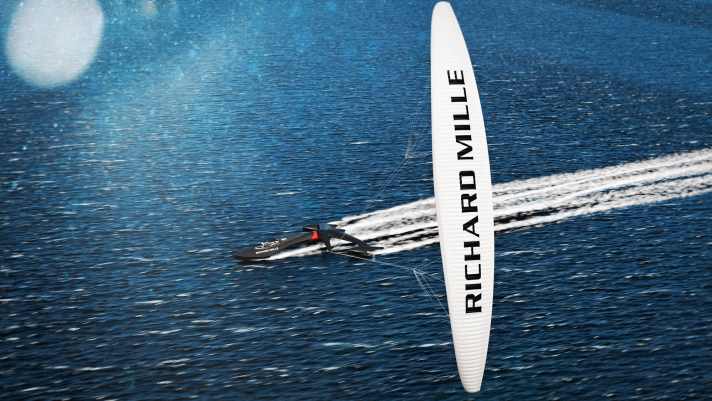
The Swiss team SP80 wants to break the existing speed record on the water with the help of a trimaran-like vehicle pulled by a kite. The goal is almost 15 knots more than the existing record. One major problem is that cavitation occurs on the rudder blade and foils from around 55 knots: water flows around the profile so quickly that the pressure drops below the vapour pressure even at low water temperatures. This creates vapour bubbles that implode again shortly behind the profile and can cause vibrations and damage. In addition, the resistance increases and stalling occurs. A so-called supercavitation foil/super-ventilated foil, which even utilises the physical effects of the special shape, should also make significantly higher speeds possible than before. The kite should also help to achieve the record. This should be better and safer than a rig, as it should provide more stability and be jettisoned in an emergency. The "SP80" was launched for the first time in August 2023, with record attempts scheduled to start in 2024.
850 nautical miles single-handed
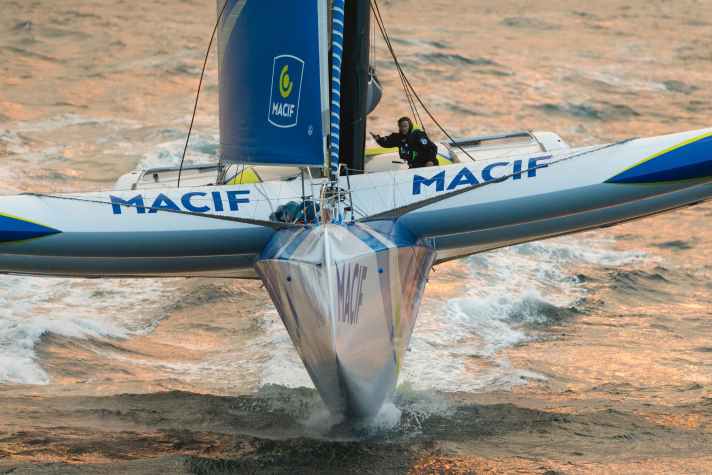
François Gabart seems to succeed in everything he tackles: First, the always cheerful sonny boy won the Vendée Globe 2012 at his first attempt, then he set a new record for the fastest single-handed circumnavigation of the world (42 days from Brest to Brest) with his 100-foot tri "Macif". In November 2017, he sailed 850.68 nautical miles in 24 hours in the South Atlantic. He is currently preparing for the Giant Tris single-handed regatta with his foiling Ultim-Tri "SVR Lazartique". Perhaps this record will also fall then.
Update 02/06/2023: Gabart has handed over the helm to Tom Laperche. He will contest the next regattas. Gabart is taking a back seat for personal reasons. He will continue to work with Mer Concept and will probably also look after the tri, but no longer as a jockey, only as a manager.
Kiel-Faroe Islands, 908 nautical miles in 24 hours!
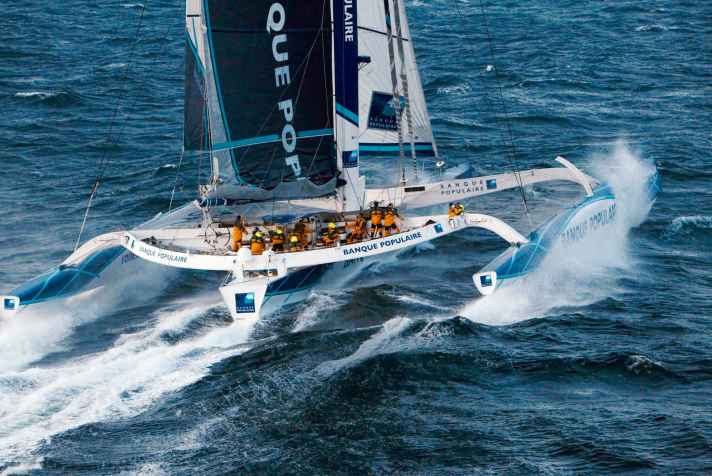
For 13 years, crews have been gnawing away at the 24-hour record set by the 131-foot tris "Banque Populaire" in 2009. During a record-breaking transatlantic voyage, it quickly became very windy shortly after the start in the USA, but the sea was still calm, according to skipper Pascal Bidégorry at the time. But in future, the foiling Ultims are expected to achieve a new peak performance. Among other things, the planned attack by the "Gitana Edmond de Rothschild" on the Jules Verne Trophy, the trophy for the fastest circumnavigation of the world under sail, could see the record fall.
540 nautical miles single-handed with an Imoca
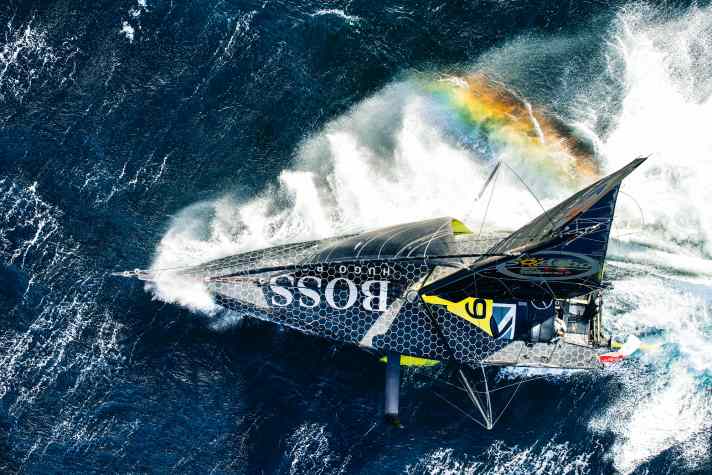
Before his retirement in 2020, Alex Thomson was known as the lead-footed skipper of the Open 60 scene. When he encountered good conditions, he always pushed his Imoca "Hugo Boss" to the limit. At the Vendée Globe 2017/18, he sailed 539.53 nautical miles in 24 hours. A record that still stands today, although the new generation of foiling boats are likely to be significantly faster. An unofficial record was reported by Jérémy Beyou's "Charal" on 27/02/2023, which was accepted by the Imoca class: It stands at 558 nautical miles.
640.48 nautical miles in the Ocean Race - monohull record
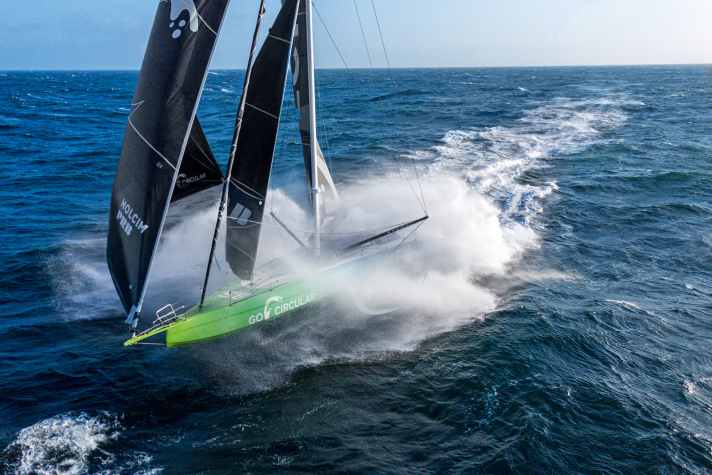
On the fifth leg of The Ocean Race 2023, the Swiss team "Holcim - PRB" achieved the impossible: The crew led by skipper Kevin Escoffier covered 640.48 nautical miles in 24 hours on their Imoca, setting a new monohull world record. The record previously held by the 100-foot racer "Comanche" had stood for eight years. In the Ocean Race, however, the 618 nautical miles from 2015 were beaten several times by the much smaller Imocas. Shortly after Holcim's 24-hour best time, among others Boris Herrmann's "Malizia Seaexplorer" even surpassed this and logged 641.13 nautical miles. However, this record was not recognised because the difference to the previous record set by "Holcim -PRB" was too small. This was due to inaccuracies in the GPS, which is why a new record distance must be at least one nautical mile better than the previous one according to the specifications of the World Sailing Speed Record Council (WSSRC).
433 Nautical miles with a Class 40
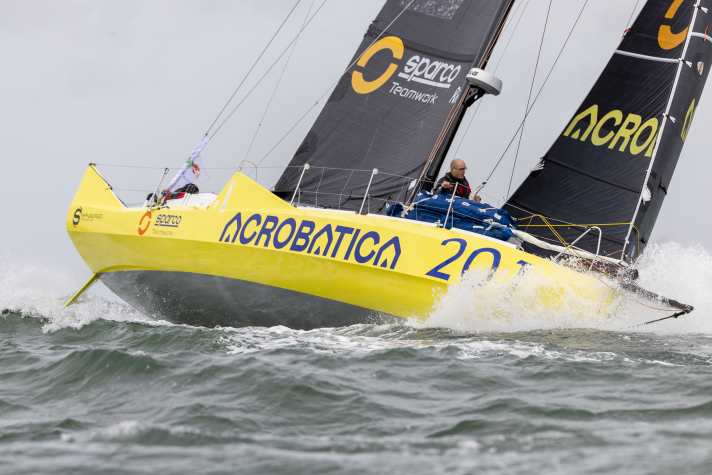
The fact that you don't necessarily have to build a multi-million euro maxi projectile to be fast was recently proven by the Class 40 "Acrobatica" with a crew of three led by Italian skipper Alberto Riva. In the 2024 Niji 40 transatlantic race, the trio sailed 433.53 at an average speed of 18.06 knots. In 2000, that would even have been enough to be faster than an Open 60.

